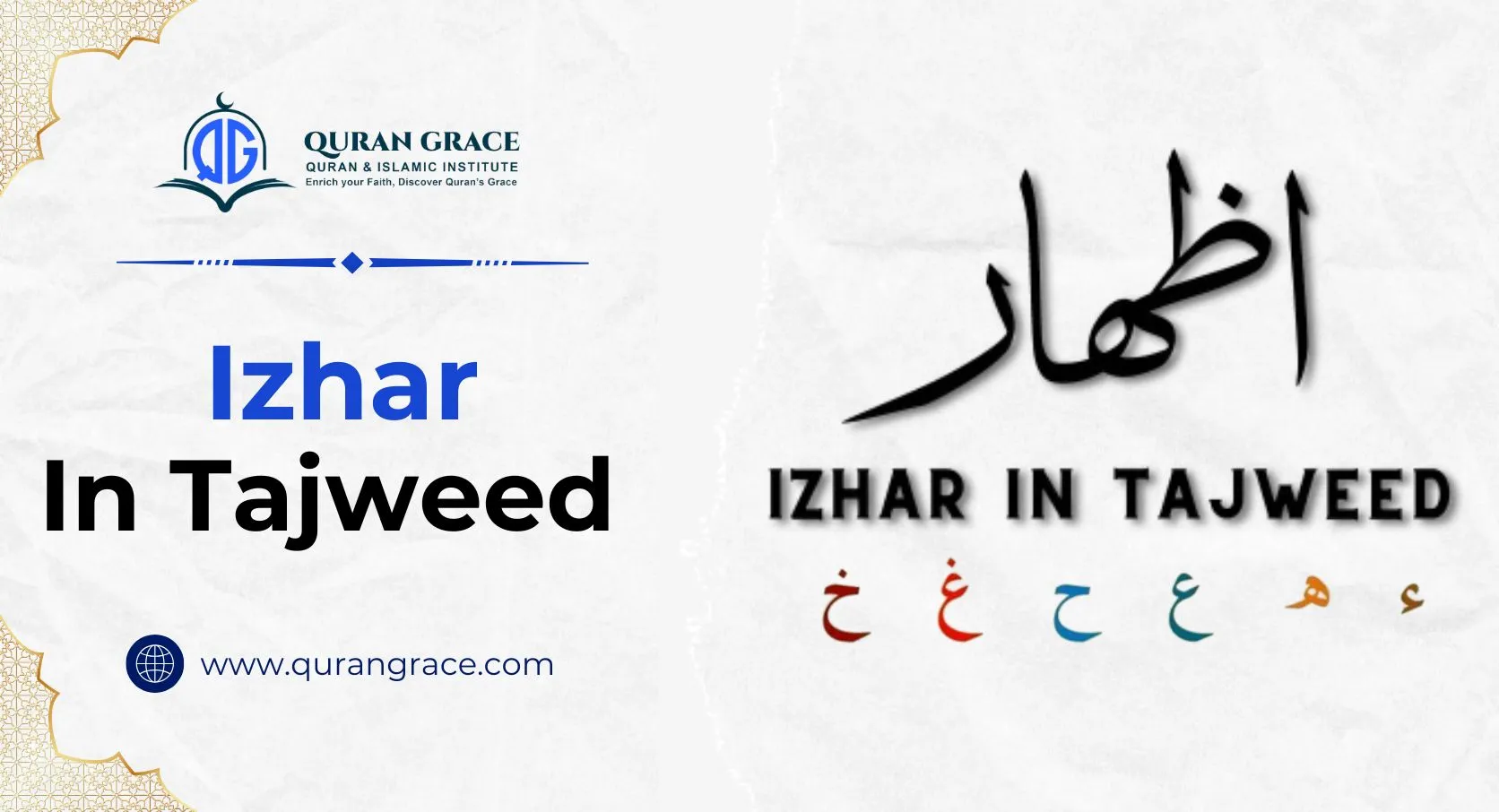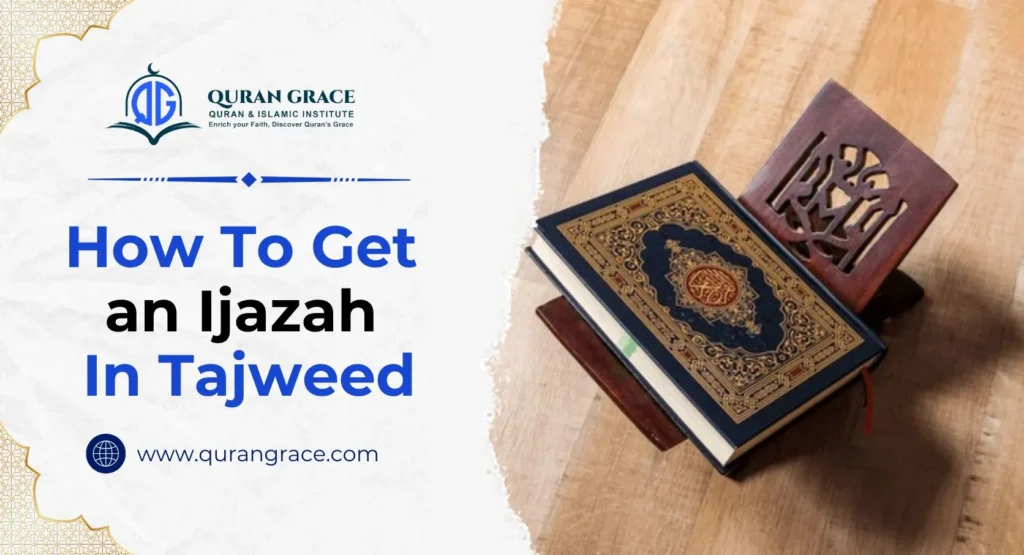In Tajweed, the concept of Izhar plays a crucial role in ensuring accurate pronunciation of certain letters that occur after a Noon Sakinah or Tanween. Mastering the principles of Izhar can greatly enhance your Quranic recitation skills, allowing for clearer and more precise articulation. A deeper understanding of Izhar is essential for anyone looking to improve their Quranic recitation, making it a topic worthy of further exploration.
Table of Contents
ToggleLinguistic Meaning of Izhar
The term “Izhar” (إظهار) in Arabic translates to the concept of making something clear, apparent, or visible. It originates from the root word “ظهر,” which means “to appear” or “to become evident.” Izhar is utilized across various fields, including grammar, linguistics, and Tajweed, which is the study of proper Quranic recitation. Specifically, in the context of Tajweed, Izhar refers to a pronunciation rule that comes into play when a non-voweled Noon (ن) or Tanween (ً, ٍ, ٌ) is followed by one of the six throat letters. According to this rule, the Noon or Tanween is pronounced distinctly and clearly, without any nasalization (ghunnah).
6 Throat Letters (Huruf Al-Halq) Are
These letters can be memorized through the mnemonic phrase:
“Akhii Haaka ‘Ilman Haazahu Ghayru Khaasir” (أخي هاك علما حازه غير خاسر).
- ء (Hamzah)
- ه (Haa)
- ع (Ayn)
- ح (Haa)
- غ (Ghayn)
- خ (Khaa)
Throat Letters examples From the Quran
Noon Saakinah with Hamzah:
- (وَمَنْ أَعْرَضَ عَنْ ذِكْرِي) – Surah Taha (20:124)
Tanween with Hamzah:
- (وَجَنَّاتٍ أَلْفَافًا) – Surah An-Naba’ (78:16)
Noon Saakinah with Ha:
- (وَمِـنْهُمْ دُونَ ذَلِكَ) – Surah Al-A’raf (7:168)
Tanween with Ha:
- (وَلِكُلِّ قَوْمٍ هَادٍ) – Surah Ar-Ra’d (13:7)
You can learn the Tajweed rule through oral recitation with a professional egyptian quran teacher online at Quran Grace to ensure proper pronunciation.
3 Main Types of Izhar
When you are applying Izhar, the Noon Saakinah or Tanween should be pronounced clearly without merging or nasalizing. The tongue does not touch the upper part of the inner mouth when pronouncing the throat letters. There are three types of Izhar, and each type of Izhar has its own set of rules:
1. Izhar Halqi
This type of Izhar requires the clear pronunciation of the letters hamza (ء), haa (ه), ‘ain (ع), haa (ح), ghaain (غ), and khaa (خ) when they follow a Noon Sakinah or Tanween. It is essential to enunciate these letters clearly after a Sakinah Noon or Tanween, as their correct pronunciation is vital for distinguishing between words and accurately conveying their meanings. The term “halqi” originates from the Arabic word for throat, reflecting the fact that these letters are produced from the throat during pronunciation.
Here are some examples of Izhar Halqi with the noon sakinah and tanween. Let’s practice pronouncing Izhar Halqi using these Quranic examples.
1. Examples of Hamza ء With the Noon Sakinah and Tanween
- وَهُمْ يَنْهَوْنَ عَنْهُ وَيَنْأَوْنَ عَنْهُ ۖ وَإِن يُهْلِكُونَ إِلَّا أَنفُسَهُمْ وَمَا يَشْعُرُونَ
- وَأَعْتَدْنَا لِلْكَافِرِينَ مِنْهُمْ عَذَابًا أَلِيمًا
2. Examples of Haa هـ With the Noon Sakinah and Tanween
- جَنَّاتٍ تَجْرِي مِن تَحْتِهَا الْأَنْهَارُ ۖ كُلَّمَا رُزِقُوا مِنْهَا مِن ثَمَرَةٍ رِّزْقًا
- سَلَامٌ هِيَ حَتَّىٰ مَطْلَعِ الْفَجْرِ
3. Examples of Ain ع With the Noon Sakinah and Tanween
- صِرَاطَ الَّذِينَ أَنْعَمْتَ عَلَيْهِمْ غَيْرِ الْمَغْضُوبِ عَلَيْهِمْ وَلَا الضَّالِّينَ
- مَّا يَفْعَلُ اللَّهُ بِعَذَابِكُمْ إِن شَكَرْتُمْ وَآمَنتُمْ ۚ وَكَانَ اللَّهُ شَاكِرًا عَلِيمًا
4. Examples of Haa ح With the Noon Sakinah and Tanween
- فَصَلِّ لِرَبِّكَ وَانْحَرْ
- إِنَّ اللَّهَ كَانَ عَلِيمًا حَكِيمًا
5. Examples of Ghin غ With the Noon Sakinah and Tanween
- فَسَيُنْغِضُونَ إِلَيْكَ رُؤُسَهُمْ
- وَنَجَّيْنَاهُم مِّنْ عَذَابٍ غَلِيظٍ
6. Examples of Kha خ With the Noon Sakinah and Tanween
- وَالْمُنْخَنِقَةُ وَالْمَوْقُوذَةُ
- إِنَّ اللَّهَ كَانَ عَلِيمًا خَبِيرًا
2. Izhar Shafawi
This type of Izhar specifically refers to the letter “meem” (م) when it appears in its consonantal form. In this situation, all letters that follow the meem sakinah must be pronounced clearly. However, there are exceptions to this rule. When either the letters “meem” or “baa” follow the meem sakinah, they are not pronounced. Instead, they are assimilated into the meem sakinah, making them less distinct.
Let’s practice pronouncing Izhar Shafawi using these Quranic examples.
- “الْحَمْدُ لِلَّهِ رَبِّ الْعَالَمِينَ”
- “أَلَمْ يَجْعَلْ كَيْدَهُمْ فِي تَضْلِيلٍ”
- “لَكُمْ دِينُكُمْ وَلِيَ دِينِ”
3. Izhar Mutlaq
Izhar Mutlak specifically highlights the correct pronunciation of the consonant “noon” when it is followed by the letters “waw” and “yaa.” It emphasizes the importance of articulating the noon distinctly without merging it with the following letters. This clarity ensures that the intended meaning of the word is accurately conveyed. Unlike Izhar Halqi, which relies on throat articulation, Izhar Mutlak focuses solely on the clarity of pronunciation without depending on specific pronunciation mechanisms.
Examples of Izhar Mutlaq
There are only four words in the Quran that always follow the rule of Izhar Mutlaq:
- بُنْيَانٌ
- قِنْوَانٌ
- صِنْوَانٌ
- الدنيا
- إِنَّ اللَّهَ يُحِبُّ الَّذِينَ يُقَاتِلُونَ فِي سَبِيلِهِ صَفًّا كَأَنَّهُم بُنْيَانٌ مَّرْصُوصٌ
- وَمِنَ النَّخْلِ مِن طَلْعِهَا قِنْوَانٌ دَانِيَةٌ وَجَنَّاتٍ مِّنْ أَعْنَابٍ وَالزَّيْتُونَ وَالرُّمَّانَ مُشْتَبِهًا وَغَيْرَ مُتَشَابِهٍ
Izhar is just one rule of Tajweed. To recite Quran beautifully, understanding Tajweed principles is essential. Join our online Quran recitation classes to explore the world of Tajweed and master the rules with efficiency.
Conclusion
Learning Quran recitation with Tajweed is essential for proper pronunciation, particularly of Izhar letters following Noon Sakinah or Tanween. This practice helps maintain the integrity of the Quranic text and improves pronunciation skills. Through examples and practice, learners can understand Izhar and embody Tajweed in their recitation. Join a free trial online tajweed course now to learn to read Quran with Quran Grace by joining our tajweed classes for adults, tajweed for children, and online tajweed classes for sisters to discover and develop your skills and enhance your tajweed learning potential today.








